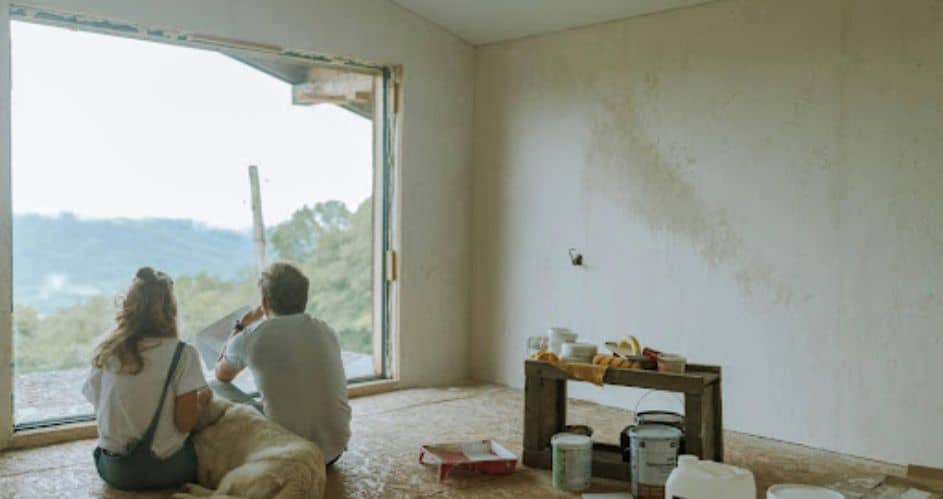
Home renovations present an opportunity to reimagine spaces, not just for humans but for our cherished pets. As pets become ever more integral to our families, their comfort and safety are pivotal considerations in home design.
Integrating pet-friendly elements into renovation projects can amplify the functionality and harmony of a home.
From installing pet doors to crafting cozy nooks, these thoughtful additions can streamline life for both pets and owners. This article explores key considerations and tips for embedding pet spaces into home renovations.
Pet Doors
Pet doors offer a practical solution, granting pets the autonomy to wander between indoor and outdoor realms. They provide pets the freedom to explore and exercise while sparing owners the constant task of door duty.
When installing a pet door, ponder the size and breed of your pet. Larger dogs like Huskies and Labradors demand more substantial doors, typically spanning 15 to 20 inches wide. For smaller pets like Pomeranians, Shih Tzus, or cats, a width of 5 to 10 inches suffices.
Security stands as another critical aspect. Modern pet doors often feature lockable mechanisms or electronic access controls synced with a pet’s collar.
This ensures that only your pet can access the door, thwarting unwanted animals. According to a survey by the American Pet Products Association, 40% of dog owners and 25% of cat owners have installed pet doors, underscoring their popularity and utility.
Designing Pet-Friendly Kitchens
The kitchen, often the hub of the home, attracts pets who enjoy the bustle. When renovating, consider establishing designated zones for feeding and storing pet supplies.
Built-in feeding stations can anchor food and water bowls, reducing spills and mess. A discreet nook with custom cabinetry can house pet food, treats, and dishes, keeping them handy yet hidden.
Incorporating durable, easy-to-clean materials is crucial in a pet-friendly kitchen. Flooring choices like ceramic tiles, vinyl, or sealed hardwood withstand spills and resist scratches from pet claws.
Countertops crafted from quartz or granite offer excellent choices, being non-porous and easy to sanitize. Additionally, a pull-out trash bin with a secure lid can prevent curious pets from accessing waste.
Creating Cozy Nooks and Retreats
Pets need their own sanctuaries to relax and retreat, especially in a lively household. Creating cozy nooks or designated pet areas can provide them with a sense of security.
For dogs, consider a built-in dog bed or a crate alcove that seamlessly integrates with the room’s design. This can be tucked under a staircase, within a mudroom, or as part of a custom cabinet ensemble.
Cats, by contrast, relish elevated spaces where they can observe their surroundings. Installing shelves or cat trees near windows offers them the perfect perch.
These spaces not only satisfy a cat’s natural curiosity but also grant them a place to escape and unwind. Adding soft bedding or blankets enhances these spots, making them even more inviting.
Pet-Friendly Flooring and Surfaces
When renovating, flooring decisions are crucial, particularly for homes with pets. The right flooring simplifies cleaning and endures the rigors of pet activity.
As mentioned earlier, options like ceramic tiles and vinyl excel in durability and ease of maintenance. For a softer touch, consider carpet tiles, which can be easily swapped if stained or damaged.
Area rugs add warmth and comfort, but choose those with low pile and made from stain-resistant materials. Avoid light colors that show dirt readily, and opt for patterned rugs that help conceal pet hair. Non-slip rug pads can also prevent rugs from shifting, providing a safer surface for both pets and humans.
Ventilation and Air Quality
Pets can impact indoor air quality, contributing to dander and odors. During renovations, consider installing a high-quality air filtration system. HEPA filters capture pet dander and other allergens, enhancing air quality. Additionally, place litter boxes or pet beds in well-ventilated areas to minimize odors.
Incorporating smart home technology can further elevate the living environment for pets. Smart thermostats help maintain a comfortable temperature, while automated lights ensure pets aren’t left in the dark when owners are away. These adjustments can significantly improve the quality of life for pets at home.
Conclusion
Incorporating pet spaces into home renovations is a thoughtful way to accommodate the needs of your furry family members. Whether it’s a functional addition like a pet door or a cozy nook for relaxation, these enhancements make your home more welcoming for everyone.
As pets continue to play central roles in our lives, designing spaces that cater to their well-being becomes a natural extension of creating a nurturing home. By considering factors like size, materials, and security, you can ensure that your home renovation project benefits both you and your pets.
